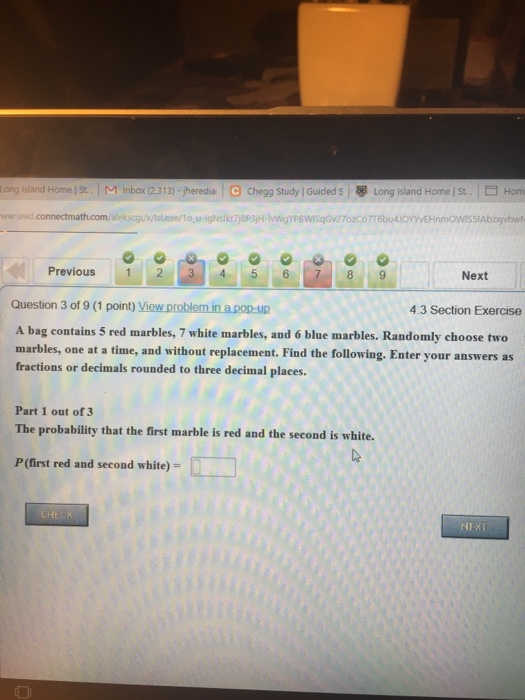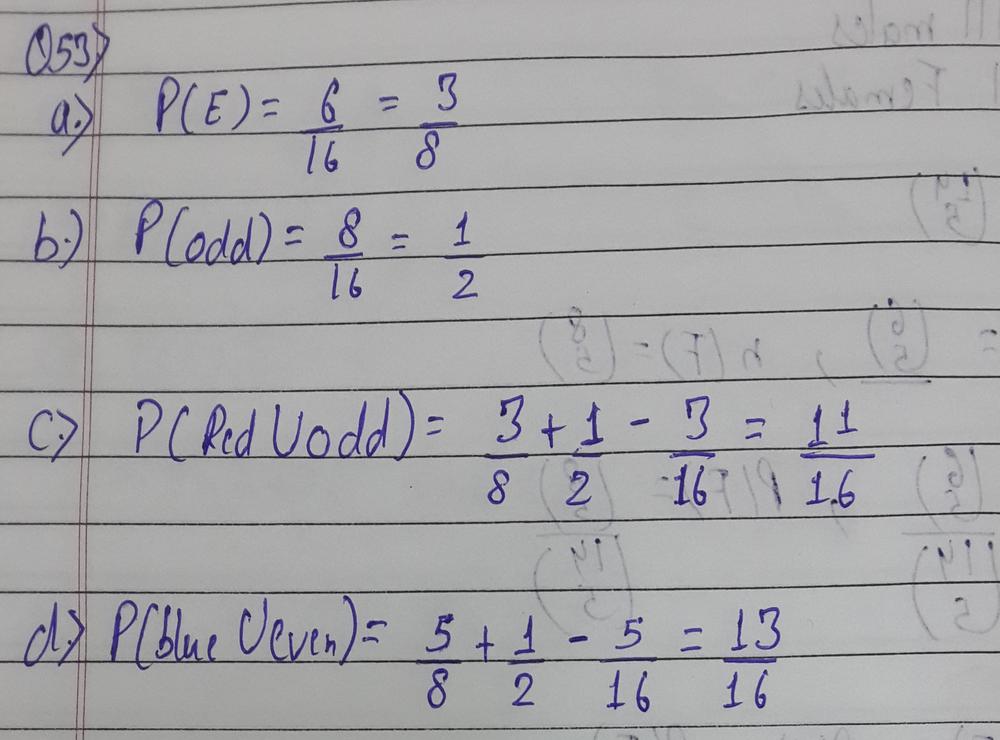You can do the second with the same process.
A bag contains 5 red marbles 6 white marbles and 5 blue marbles you draw a marble find p not red.
6c2 14c2 20c4 0 2917 what is the probability that none of the marbles.
The first marble is returned in the bag before drawing the second.
What is the probability that all the marbles are red.
I like to go step by step with these ones.
Multiplying these yields frac 3 11.
8c5 23c5 0 0017 what is the probability that exactly two of the marbles are red.
A draw the tree diagram for the experiment.
You draw 5 marbles out at random without replacement.
But then you only have 10 marbles left so the probability of picking a white marble is frac 6 10.
What is the probability that exactly two of the marbles are red.
A jar contains 4 black marbles and 3 red marbles.
Two marbles are drawn without replacement.
A bag contains 8 red marbles 4 white marbles and 5 blue marbles.
Two marbles are drawn without replacement from a jar containing 4 black and 6 white marbles.
A bag contains 8 red marbles 5 white marbles and 10 blue marbles.
We will assume that only two marbles are drawn from the bag and hence there are two cases.
What is the probability that all the marbles are red.
A bag contains 7 red marbles 9 white marbles and 9 blue marbles.
Find p red and blue.
So the first turn you have a frac 5 11 chance of picking a red marble.
You draw 4 marbles out at random without replacement.
What is the probability that all the marbles are red.
The first marble is not returned in the bag before drawing the second.
A bag contains 6 red marbles 7 white marbles and 7 blue marbles.




















